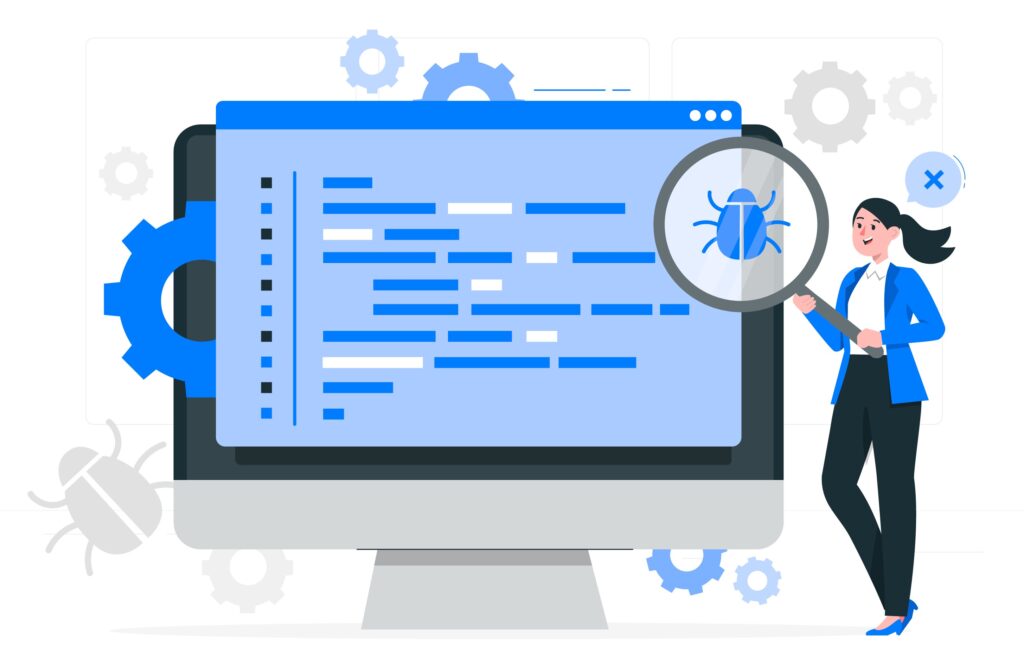Is there truly something called “Bug-free software” at all? The answer is simple: just don’t write any non-trivial software!
Realistically, the amount of completely bug-free software in the world is vanishingly small. While it does exist, creating such software comes at an incredibly high cost—both in time and resources. For most developers and organizations, aiming for absolute perfection isn’t practical. Instead, the goal is to minimize bugs to an acceptable level and ensure the software is functional, secure, and maintainable.
In this guide, we’ll explore practical strategies to know as bug-free software or reduce the number of bugs in your code while maintaining a balanced, efficient software development process.
Why Is Bug-Free Software Rare?
The complexity of modern software makes it nearly impossible to achieve zero bugs, especially in non-trivial projects. Factors such as:
- Changing requirements: Client needs and expectations evolve, leading to continuous modifications.
- System complexity: Larger projects involve many interconnected components, increasing the likelihood of unforeseen issues.
- Human error: Developers are human, and mistakes are inevitable.
Acknowledging these challenges helps us shift our focus to strategies that reduce bugs rather than striving for unattainable perfection.
Strategies to Minimize Bugs in Software
While we may not eliminate bugs entirely, adopting effective practices can significantly reduce their frequency and impact. Let’s dive into proven strategies for producing high-quality, robust code.
1. Understand the Software Requirements Fully
Many bugs stem from a lack of clarity about what the software is supposed to do. If requirements are vague or misunderstood, it’s easy to build functionality that doesn’t meet user expectations or business needs. Taking the time to fully grasp and validate the project requirements with stakeholders helps ensure that you are aligned from the start, reducing the chances of costly mistakes and rework later.
How to Improve Requirements Gathering:
- Collaborate with stakeholders: Regular discussions ensure alignment on objectives and expectations.
- Document requirements: Clear, written documentation minimizes ambiguity.
- Use examples and prototypes: Visual aids and working demos can clarify complex ideas.
Taking the time to understand and refine requirements upfront reduces the risk of creating bugs caused by misaligned goals.
2. Plan Your Code Before Writing It
Jumping straight into coding without a clear plan is a recipe for disaster. Thoughtful planning—whether it’s creating flow diagrams, writing pseudocode, or designing architecture—helps you foresee potential challenges and define clear, structured solutions. A solid plan can make the coding process smoother, making the final product easier to debug, maintain, and scale in the future.
Tips for Effective Planning:
- Think about structure: Sketch out how your code will be organized.
- Document your design: Writing down your approach forces you to consider edge cases and potential pitfalls.
- Break problems into smaller pieces: Divide your code into modular, manageable units that perform one task well.
Planning acts as a roadmap, helping you stay organized and focused throughout the development process.
3. Follow the Principle of Simplicity
The simpler your code, the fewer opportunities there are for errors. Keeping your codebase clean and straightforward minimizes the chances of bugs hiding in complex, convoluted logic. Embrace clear naming conventions, modular code, and a focus on doing one thing well in each function or class. Simplicity also improves readability, making it easier to spot and fix problems quickly.
How to Simplify Code:
- Write small functions: Ensure each function handles a single responsibility.
- Use clear, descriptive names: Variable, function, and class names should reflect their purpose.
- Avoid unnecessary features: Stay focused on solving the problem at hand.
Remember, simplicity doesn’t mean cutting corners—it’s about creating clean, elegant solutions.
4. Test Thoroughly at Every Stage
Testing is a cornerstone of bug reduction, and it should be integrated throughout the entire development cycle, not just at the end. Unit tests, integration tests, and end-to-end tests help ensure that each component of the software works as expected. Regular testing during development helps catch issues early, before they snowball into bigger, harder-to-fix problems.
Types of Testing to Consider:
- Unit Testing: Test individual functions and modules to ensure they perform as expected.
- Integration Testing: Check how different parts of the application work together.
- System Testing: Evaluate the entire system’s functionality under realistic conditions.
- Regression Testing: Verify that new changes don’t break existing functionality.
Test-Driven Development (TDD):
In TDD, you write tests before implementing the corresponding code. This approach ensures that your code is designed with testability in mind and helps catch issues early.
5. Embrace Peer Reviews and Pair Programming
Having another set of eyes on your code can greatly enhance its quality. Peer reviews, where teammates review each other’s work, often reveal issues that might have been overlooked. Pair programming—where two developers work on the same code together—allows for real-time collaboration, problem-solving, and knowledge-sharing, reducing the likelihood of bugs slipping through.
Benefits of Code Reviews:
- Identify potential bugs: Peers can spot errors or inefficiencies.
- Share knowledge: Team members learn from each other’s perspectives.
- Enhance accountability: Knowing your code will be reviewed encourages careful, thoughtful work.
Whether through formal reviews, pair programming, or informal discussions, collaboration is key to catching bugs early.
6. Prioritize and Manage Bugs Effectively
No software is entirely free from bugs, but how you handle them can make all the difference. Once bugs are discovered, prioritize them based on severity and impact. Having a clear process for managing bugs—whether through a bug tracking system, assigning them based on priority, or implementing a strict review process—ensures that issues are addressed in a timely manner without overwhelming the team.
Steps to Handle Bugs:
- Assess severity: Determine the impact and prioritize fixes accordingly.
- Fix strategically: Focus on the most critical issues first.
- Conduct regression tests: After fixing a bug, ensure the changes haven’t introduced new problems.
- Track and learn: Use bug tracking tools to identify recurring issues and improve your process.
By addressing bugs thoughtfully, you can maintain stability and user satisfaction.
Recommended Reading and Learning Resources
Books
- “The Pragmatic Programmer: Your Journey to Mastery” by Andrew Hunt and David Thomas“
This classic book offers a wealth of practical advice on software development, including tips on writing clean, maintainable code and strategies for avoiding bugs. The authors emphasize the importance of planning, simplicity, and careful attention to detail—ideas that align well with the article’s message. - “Clean Code: A Handbook of Agile Software Craftsmanship” by Robert C. Martin“
This book provides concrete advice on writing clean, bug-free code. It stresses the importance of simplicity, clear naming conventions, and good coding practices—key points mentioned in the article. Martin also provides examples of how to refactor messy code and avoid common pitfalls that lead to bugs.
Online Resources
Google’s extensive engineering documentation includes best practices for writing quality code, reducing bugs, and maintaining scalable systems. These resources provide real-world insights that align well with the principles of simplicity, testing, and peer reviews.
Conclusion: Think of Strategies as Nets
Each of these strategies—understanding requirements, planning code, simplifying design, thorough testing, peer reviews, and effective bug management—acts as a net to catch bugs. Some bugs will inevitably slip through each net, but by using multiple strategies together, you create a layered defense that minimizes their presence.
The pursuit of bug-free software may be unrealistic, but striving for well-crafted, reliable code is within reach. By adopting these strategies, you’ll not only reduce bugs but also improve the overall quality and maintainability of your software.





